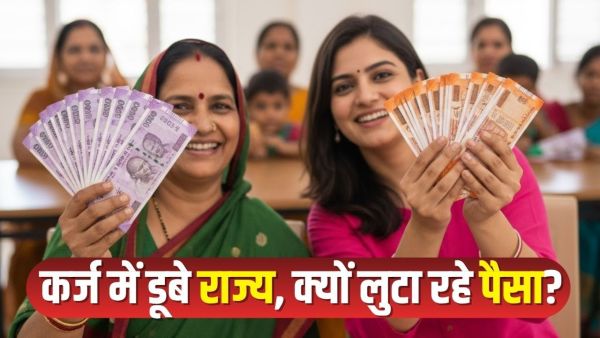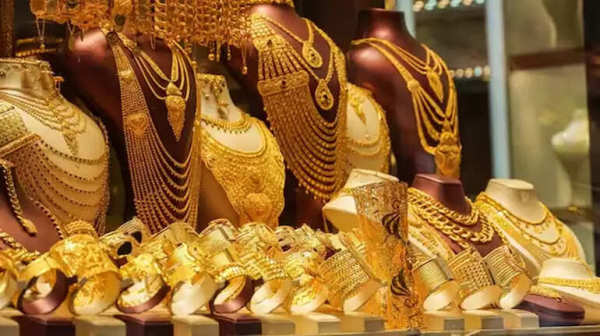
Flood of cash gifts to women
These days, the trend of Unconditional Cash Transfers schemes giving direct cash to women has increased rapidly in the country. This is a competition in which almost every state wants to join. According to a recent study by PRS Legislative Research, the trend which was present in only two states two years ago in 2022-23, has now spread to 12 states by 2025-26.
The expenditure on these schemes is shocking. According to an estimate, this year the state governments are collectively going to spend Rs 1,68,040 crore on these schemes. This huge amount is 0.5% of the total gross domestic product (GDP) of these states. Just two years ago, in 2022-23, this figure was less than 0.2% of GSDP.
Darling, Lakshmi, sister…many names, one purpose
These schemes are being run under populist names in different states. Be it 'Griha Lakshmi Yojana' in Karnataka, the famous 'Ladli Brahmin Yojana' of Madhya Pradesh, or 'Ladki Behan Yojana' of Maharashtra, the aim of all is to provide direct financial help to women voters.
Read this also- Many states reached a situation of poor income! Where is all the money going?
Political parties are calling this a big step for women empowerment and they are being used openly to reach out to voters before the elections. Its effect is also visible; The beneficiaries are happy, but there is a huge price for this happiness which has to be paid directly from the state treasury.
Increasing pressure on treasury, state in revenue deficit
The PRS report highlights the second, and perhaps most worrying, aspect of this trend. This huge expenditure is taking place at a time when many states are already struggling with financial crisis. According to the report, 6 out of these 12 states have estimated 'Revenue Deficit' for 2025-26.
Revenue deficit simply means that the state's income (revenue receipts) is falling short even to meet its daily expenses (revenue expenditure). This deficit shows that states are also taking loans to meet their regular expenses like salaries, pensions or interest.
How it is affecting us, understand it from the example of Karnataka and Madhya Pradesh. The report shows that if the expenditure on these cash transfer schemes were excluded, the Karnataka exchequer would have been in a 'revenue surplus' (profit) of 0.3% of GSDP. But, due to the expenditure of this scheme, the state has now gone into 'revenue deficit' (loss) of 0.6% of GSDP. Similarly, these schemes reduce Madhya Pradesh's revenue surplus from 1.1% of GSDP to just 0.4%.
Election year, increasing allocation and RBI warning
Instead of slowing down, the pace of this expenditure is increasing, especially in those states where elections are near. For example, in Assam and West Bengal, where assembly elections are to be held next year, the budget of these schemes has been increased significantly. Compared to the last financial year, Assam has increased its allocation by 31%, while West Bengal has increased it by 15%. Jharkhand also directly increased the monthly payment under 'Mukhyamantri Maiya Samman Yojana' from Rs 1,000 to Rs 2,500 in October 2024.
It is not that no one is paying attention to this increasing financial burden. The Reserve Bank of India (RBI) has already warned states about rising expenditure on subsidies, farm loan waivers and such cash transfers. RBI believes that this may worsen the financial health of the states and may lead to less money for other important development works like building roads, schools or hospitals.
States are already burdened with debt
This new expense of cash transfer has come on the states at a time when their total outstanding debt is already at a high level. According to the PRS report, the total outstanding debt of states remains higher than pre-pandemic levels. As of March 2025, the total debt of states stood at 27.5% of GSDP, while the FRBM review committee had recommended a limit of 20%. Only three states like Gujarat, Maharashtra and Odisha have been able to meet this 20% target.
On the other hand, states like Punjab (46%), Himachal Pradesh (44%), and Arunachal Pradesh (42%) have much higher debt burden than their GSDP. In such a situation, this new annual expenditure of Rs 1.68 lakh crore, which does not directly create any assets (non-asset creating), can deepen the economic challenges of the states.
-
REET Mains 2025: Detailed notification for Grade-III teacher recruitment released, apply for 7000+ posts..

-
Government Employees Alert: Key Rules You Must Know About Unified Pension Scheme After Resignation

-
Silver Price Update: Weekend Sees Slight Dip in Silver Rates Across Major Indian Cities

-
Gold Rate Update: After Brief Rise, Gold and Silver Prices Slip Again Across Indian Cities

-
Secure Your Future: Why NPS Should Be an Essential Part of Your Retirement Strategy
